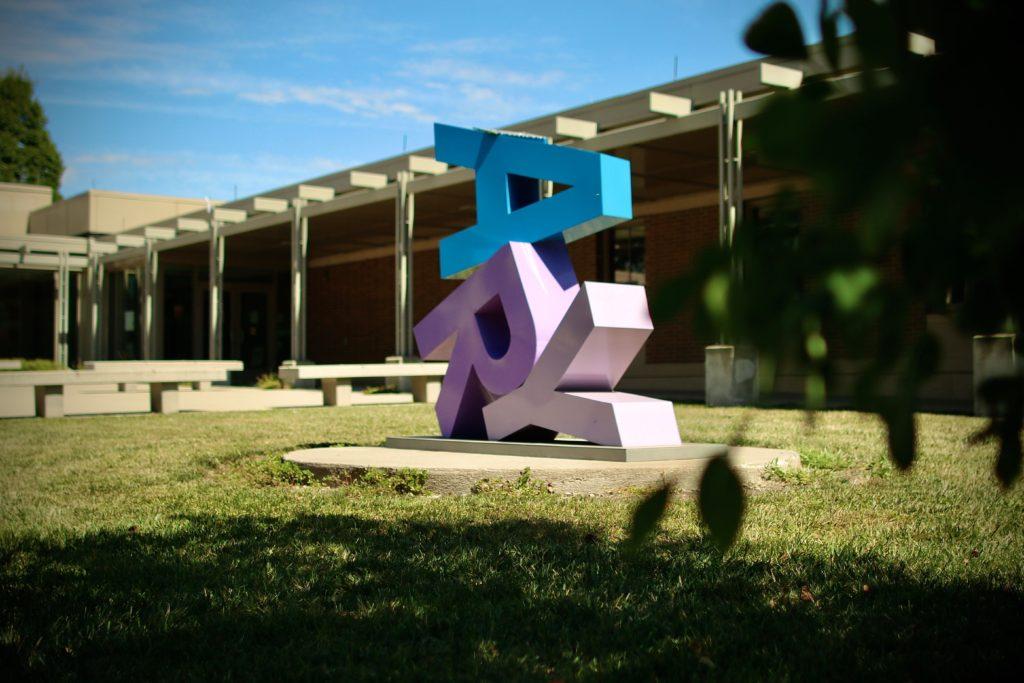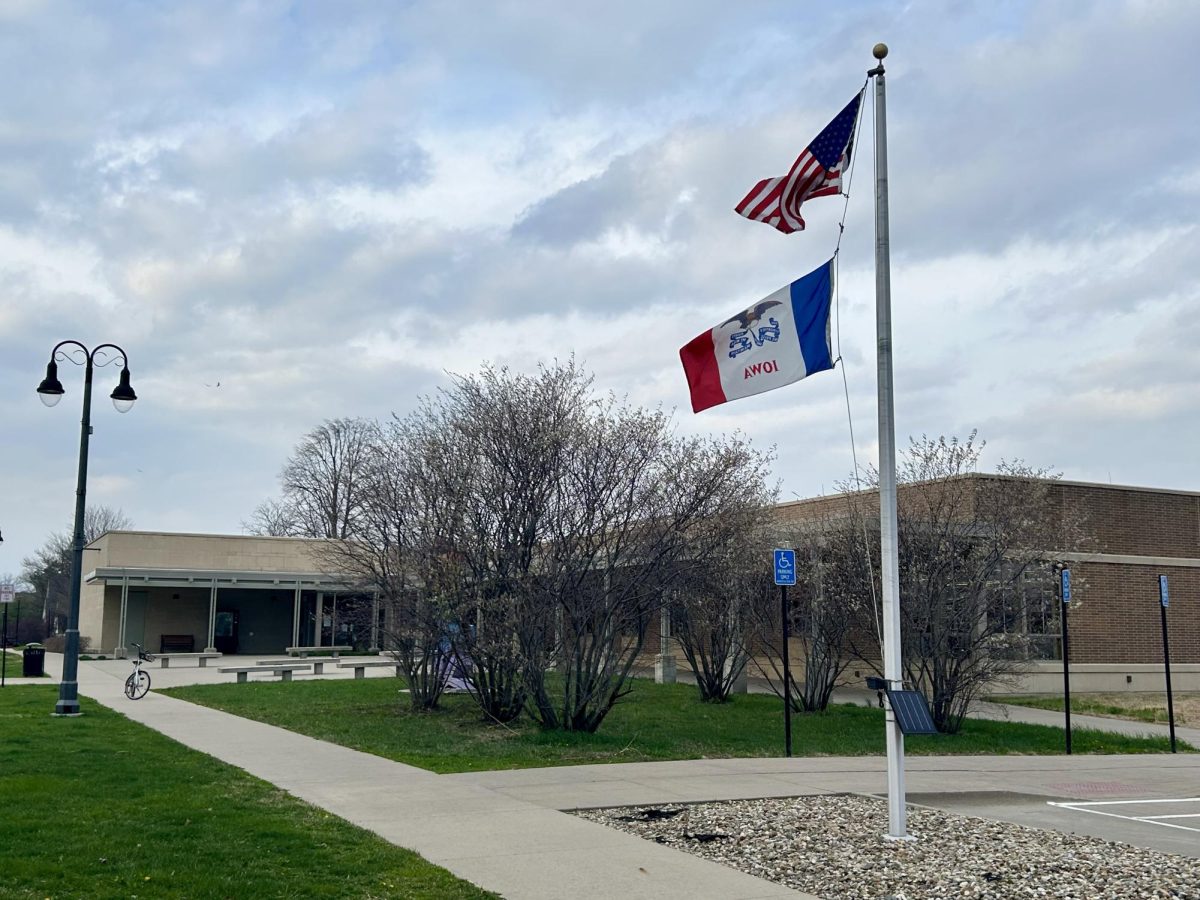Drake Community Library was still technically closed when it opened its doors to provide electricity and air conditioning to those affected by the derecho. But after two weeks of helping the community recover, the library staff have decided to resume in-person services, albeit within social distancing guidelines.
When a long-line windstorm, called a derecho, hit Iowa on Aug. 10, Drake Library was already working on plans to reopen. After closing in mid-March and switching entirely to curbside delivery, staff at the library were waiting to see how the new school year would affect case numbers before making a decision on reopening.
“We’d been preparing for it,” said Marilyn Kennett, Drake Community Library’s director, “The derecho just pushed our timeline forward.”
The derecho tore down trees and damaged houses and businesses across Grinnell. Although the library only sustained minor damage in the storm, including to the roof and to its iconic “Library” sculpture, it was left without power for almost five days.
In the immediate aftermath of the storm, emergency services personnel created a charging station for community members to charge their phones and computers at Grinnell’s Public Services building. As power returned to the library, its staff relieved firefighters and police officers at the charging station by taking over some of those responsibilities.
“We started a charging and cooling station at the library,” said Kennett. “[We also offered] internet, which was the main thing. And without power for their air conditioning, the cooling station aspect was very important.”
Keri Beemer, who owns and operates a small religious flag-making business, Flags for Faith, from her home, said that Drake Library’s free wireless internet was critical in helping her business weather the storm.
“I didn’t have any internet connection or power at my residence,” said Beemer, “which is where I run my business. I couldn’t get a hold of anybody, I couldn’t check my orders, and I couldn’t move money around.”
Even after Beemer got her power back, she still didn’t have an internet connection at her home for multiple days. She turned to the library, where she was able to access their free Wi-Fi from the parking lot without leaving her car.
“I was able to connect to their internet, and it was fast speed internet,” said Beemer, “I was able to continue to post my products and advertise my products, and most importantly communicate with my customers … It was like an internet cafe outside.”
With people both inside and out of the library, staff didn’t see much reason to stay closed. “Once people were in the building for those purposes, they were also allowed to browse the collections and check out books,” said Kennett. “Instead of going back to shutting down and not allowing the public into the building, the public was allowed to [stay] in the building.”
Now that the library’s doors are open to the general public, new social distancing and PPE requirements have been put into place to maintain safety.
Seating at computer spaces has been spaced out, while a reduced capacity occupancy model has been adopted for the entire building. Everyone who enters the library is now required to wear a mask and hand sanitizer is readily available. Returned materials are also isolated based on the CDC’s latest guidelines.
To ensure that everyone has access to the library’s collection, the existing curbside delivery program will remain, meaning that customers can still check out books without having to do so in person.
But even as the library returns to some semblance of normalcy, the services it provided in the aftermath of the derecho remain critical. Four weeks after the storm, some residents are still without access to the internet. For them, the library offers a chance to get work done, study or just surf the web.
“Just today [Sept. 2],” said Kennett, “there was someone at the desk saying they didn’t have internet at home. It is a critical service.”

























































